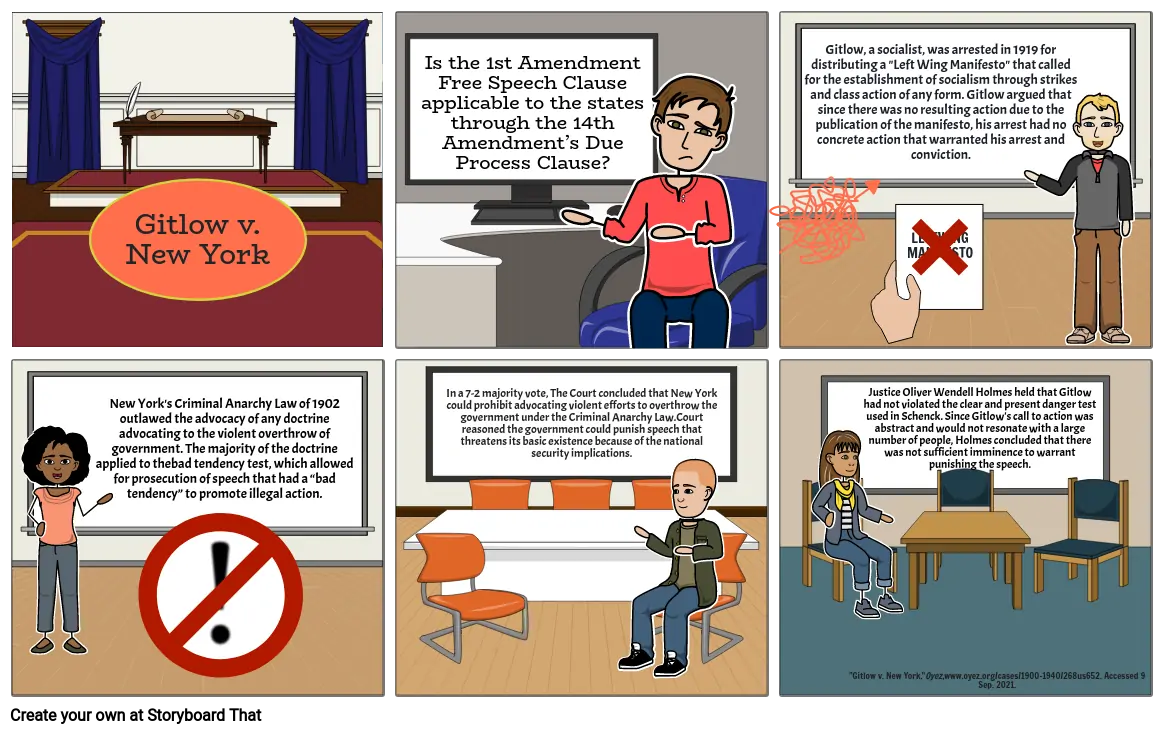Gitlow v New York

Storyboard Text
- Gitlow v. New York
- Is the 1st Amendment Free Speech Clause applicable to the states through the 14th Amendment’s Due Process Clause?
- Gitlow, a socialist, was arrested in 1919 for distributing a "Left Wing Manifesto" that called for the establishment of socialism through strikes and class action of any form. Gitlow argued that since there was no resulting action due to the publication of the manifesto, his arrest had no concrete action that warranted his arrest and conviction.
- LEFTWINGMANIFESTO
- New York's Criminal Anarchy Law of 1902 outlawed the advocacy of any doctrine advocating to the violent overthrow of government. The majority of the doctrine applied to the bad tendency test, which allowed for prosecution of speech that had a “bad tendency” to promote illegal action.
- In a 7-2 majority vote, The Court concluded that New York could prohibit advocating violent efforts to overthrow the government under the Criminal Anarchy Law. Court reasoned the government could punish speech that threatens its basic existence because of the national security implications.
- Justice Oliver Wendell Holmes held that Gitlow had not violated the clear and present danger test used in Schenck. Since Gitlow's call to action was abstract and would not resonate with a large number of people, Holmes concluded that there was not sufficient imminence to warrant punishing the speech.
- "Gitlow v. New York." Oyez, www.oyez.org/cases/1900-1940/268us652. Accessed 9 Sep. 2021.
Over 30 Million Storyboards Created

